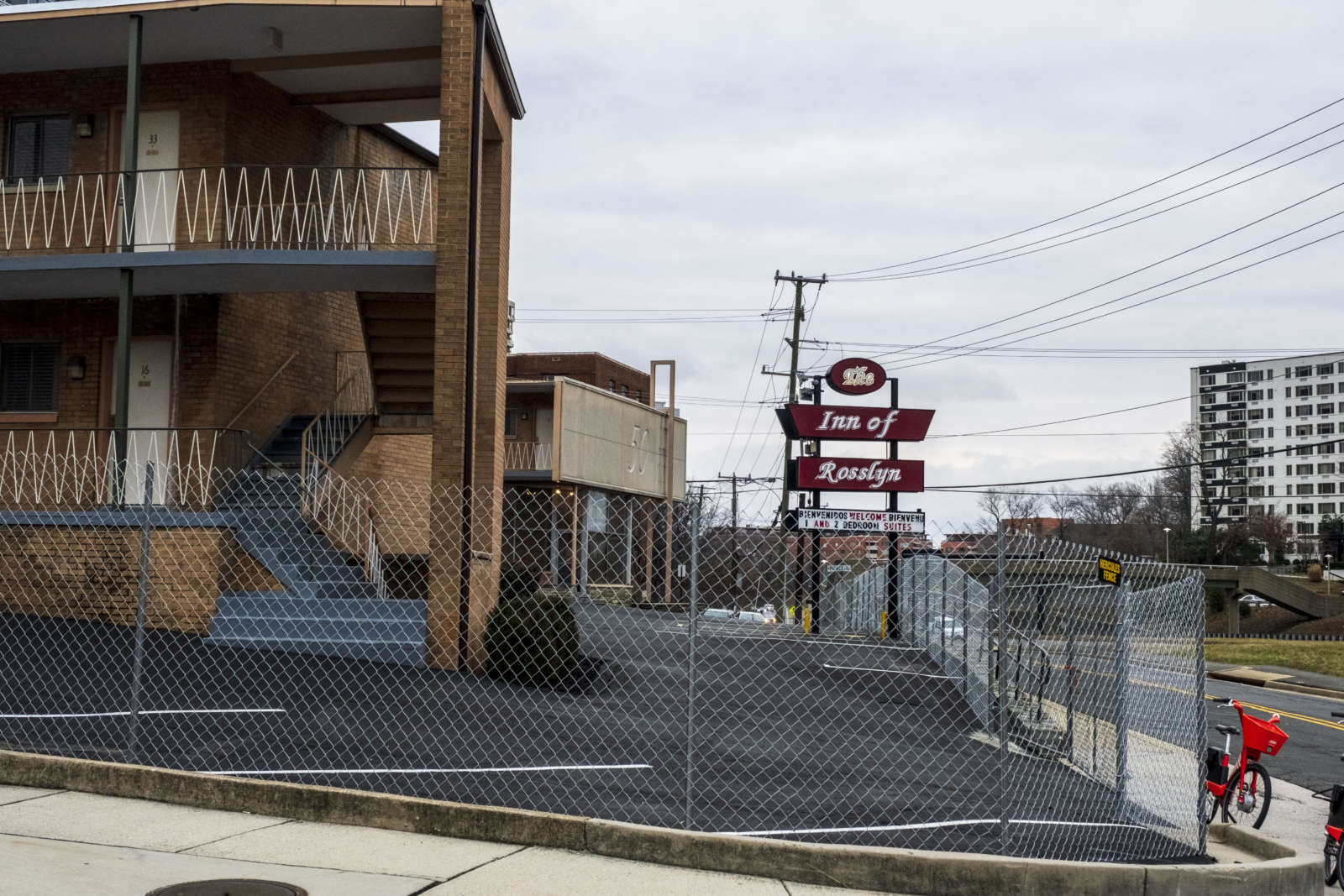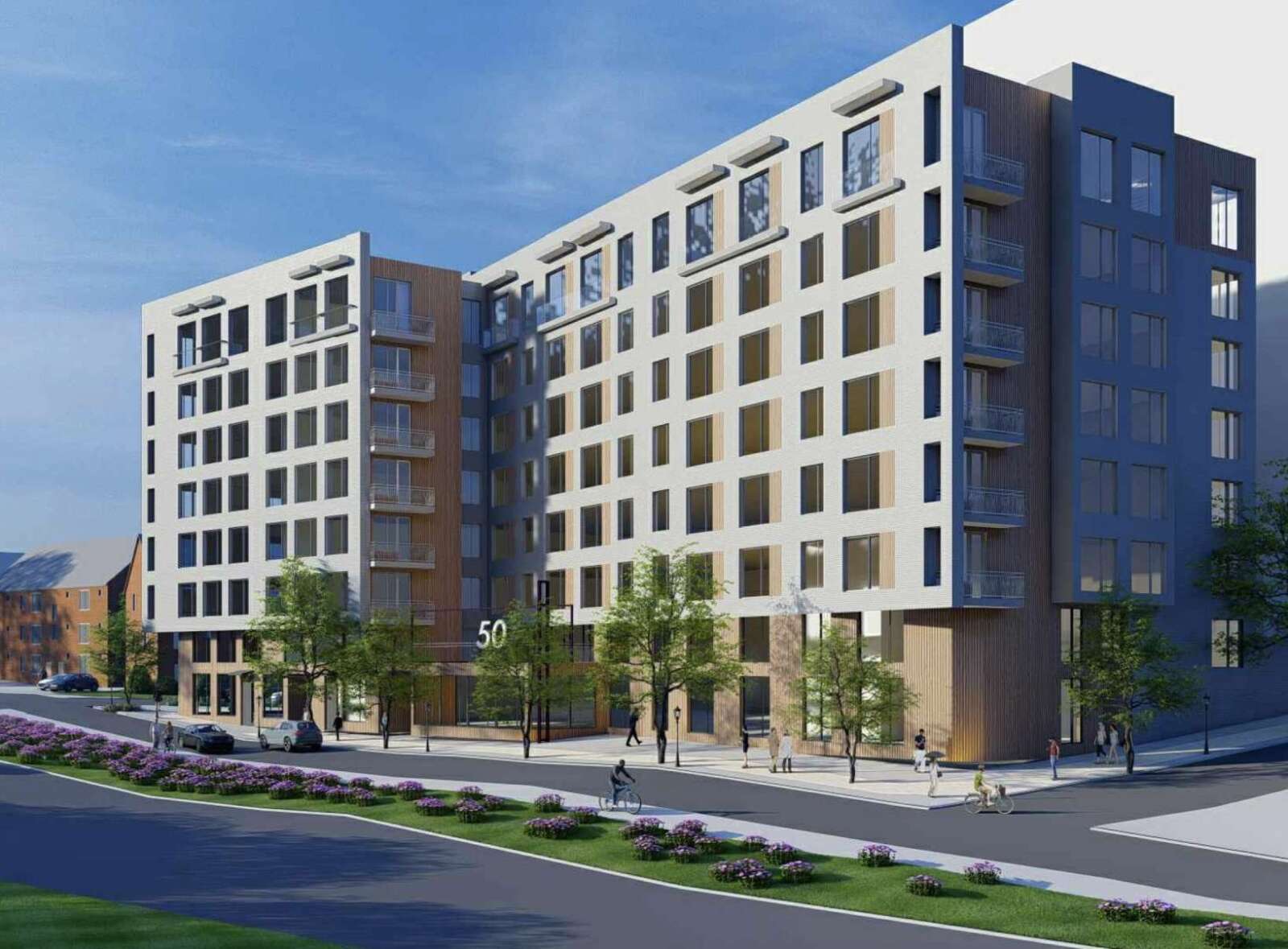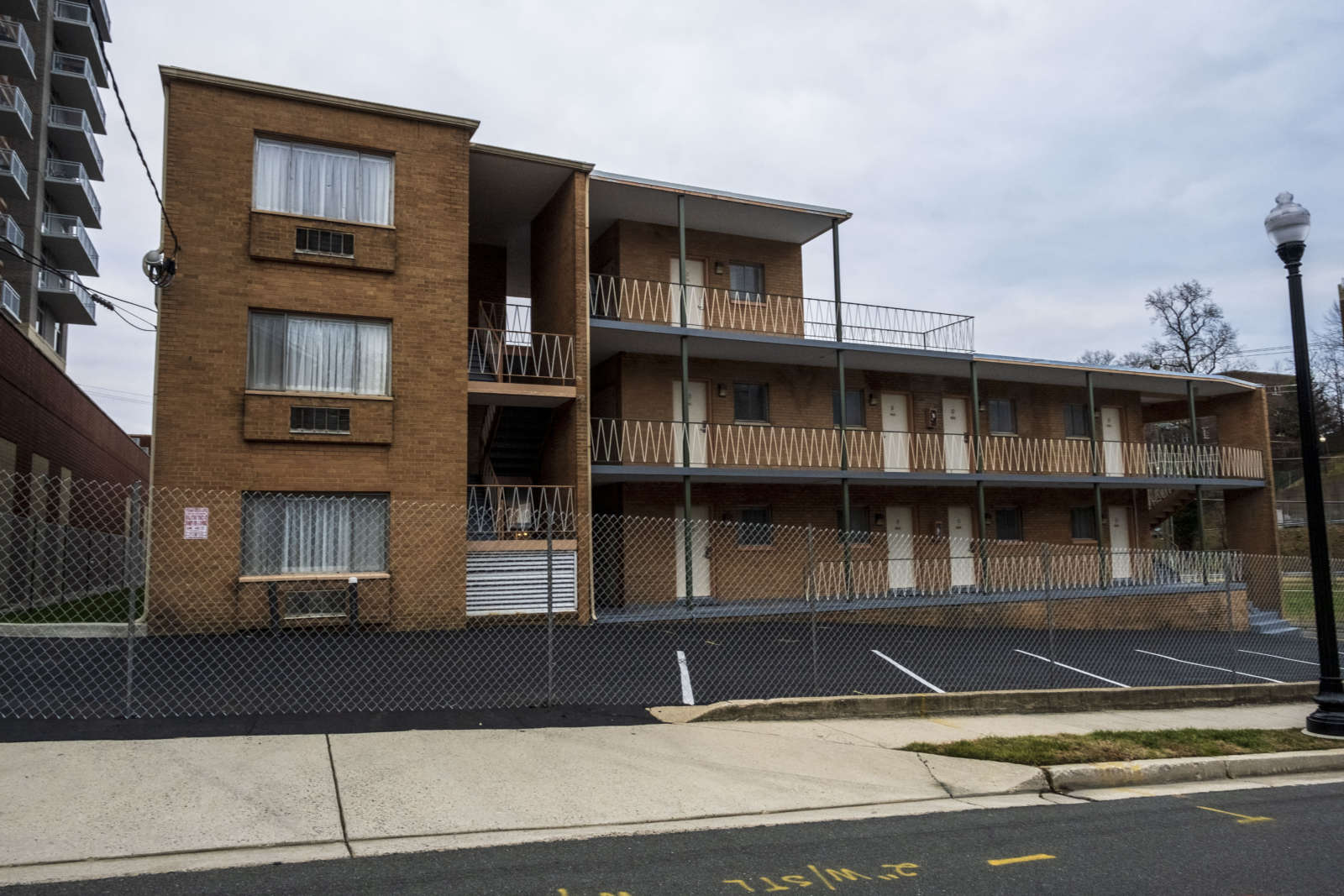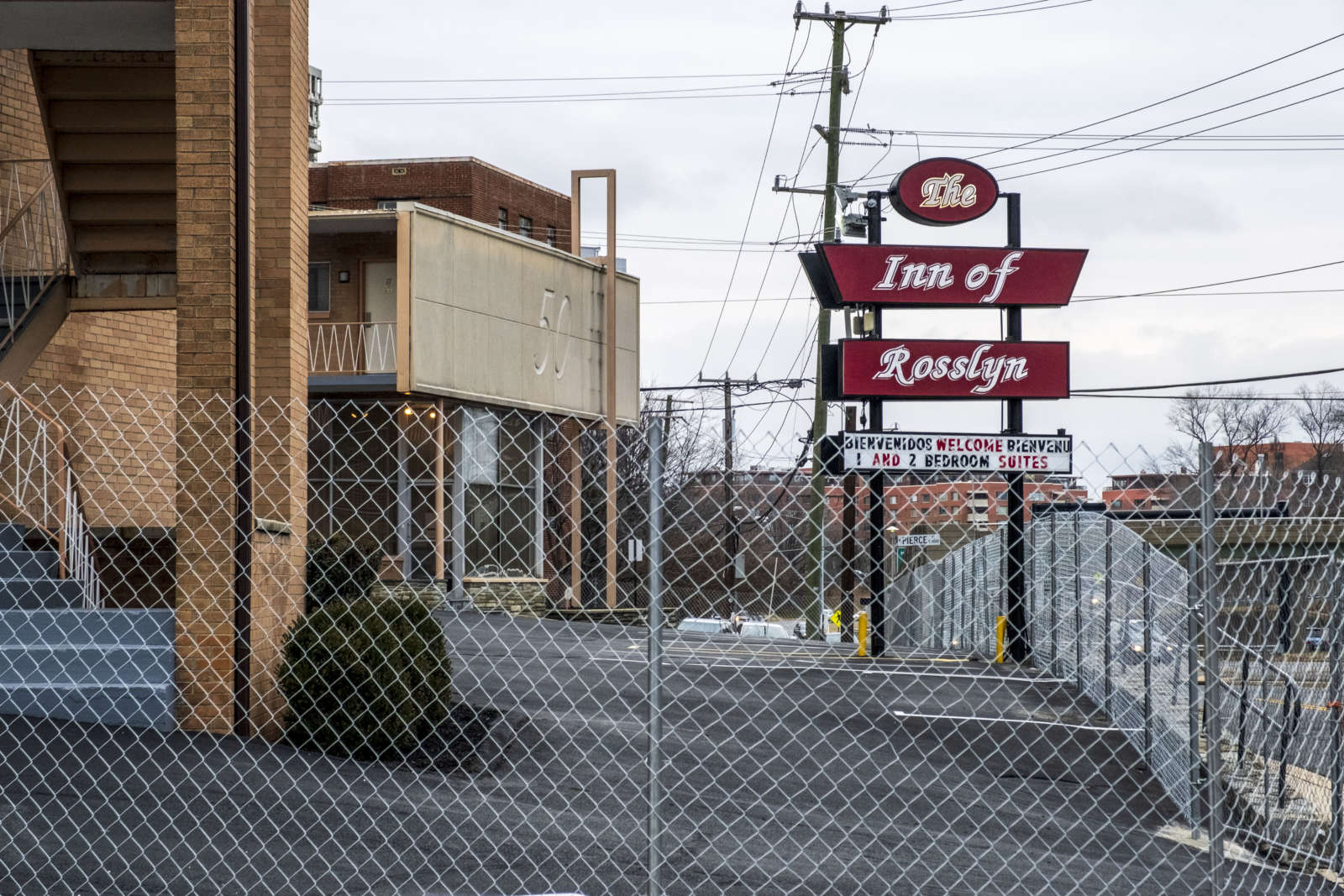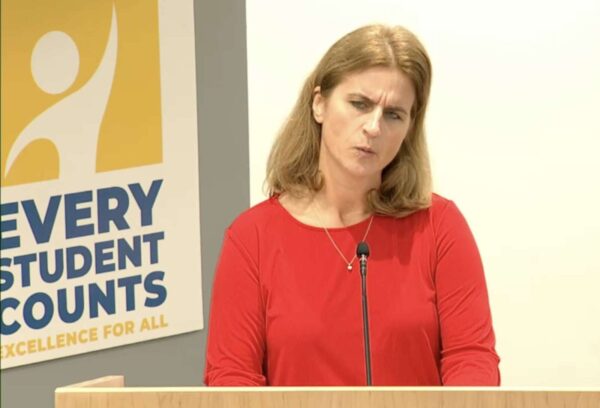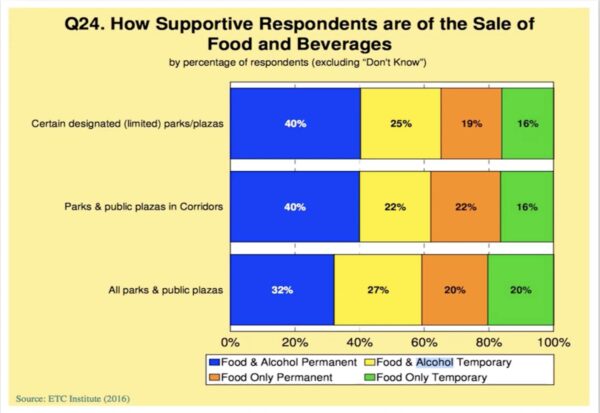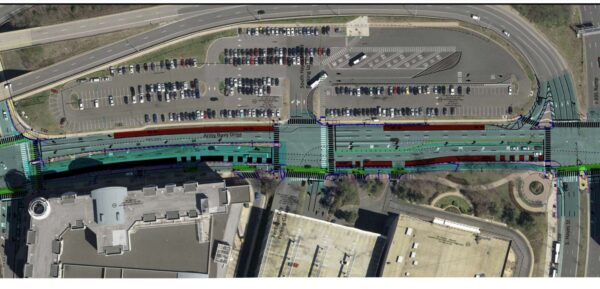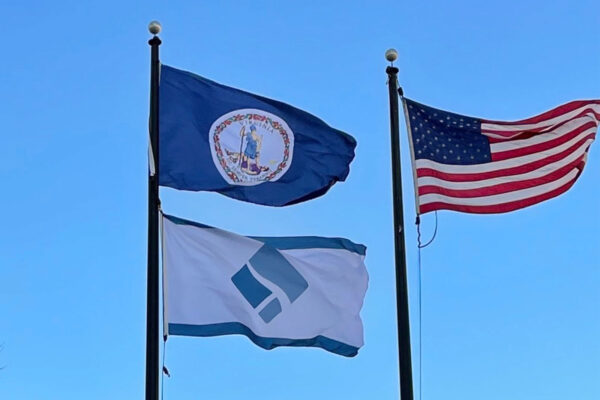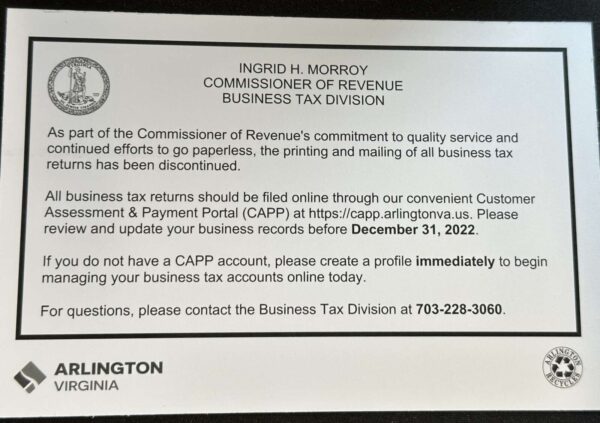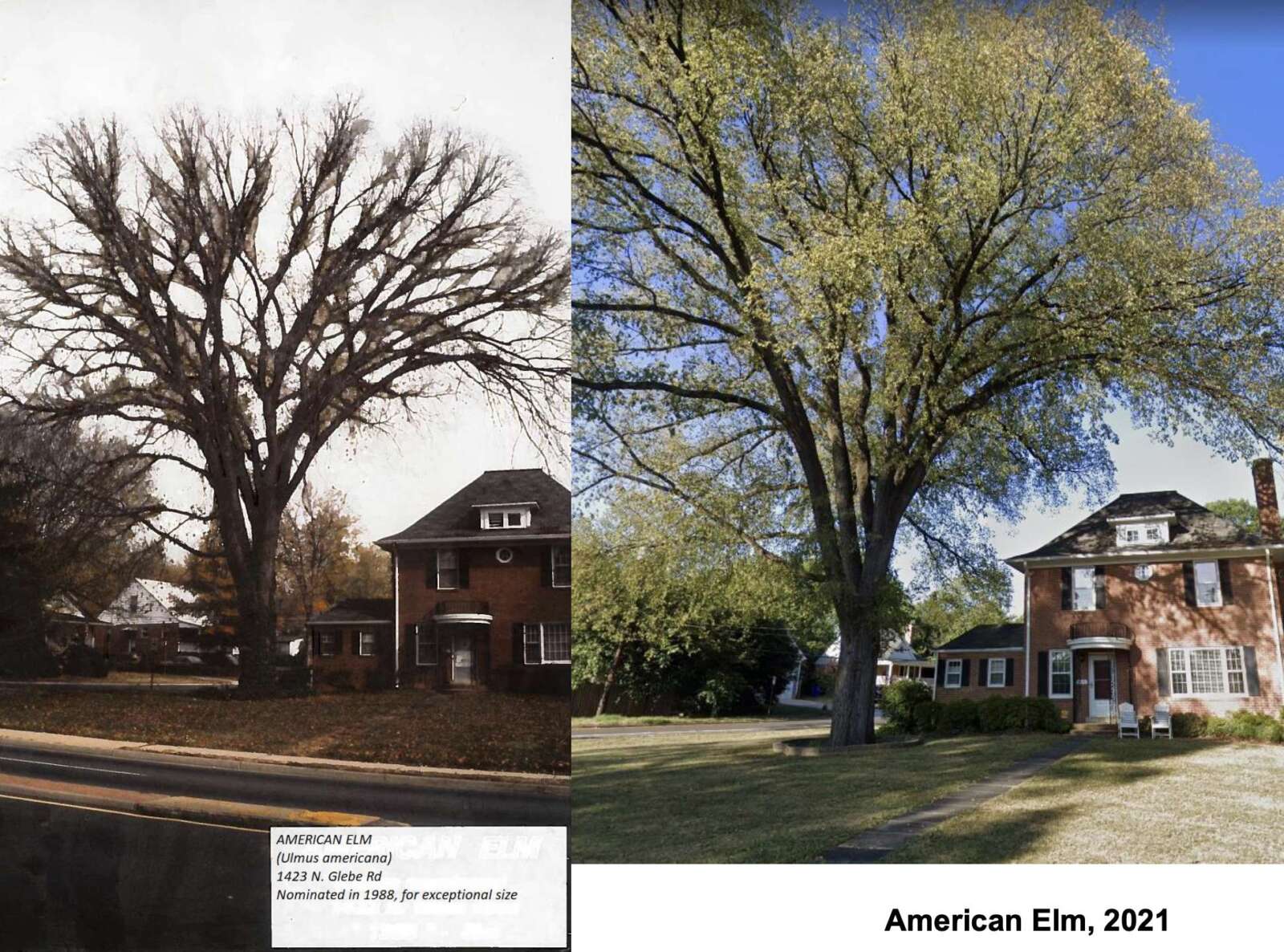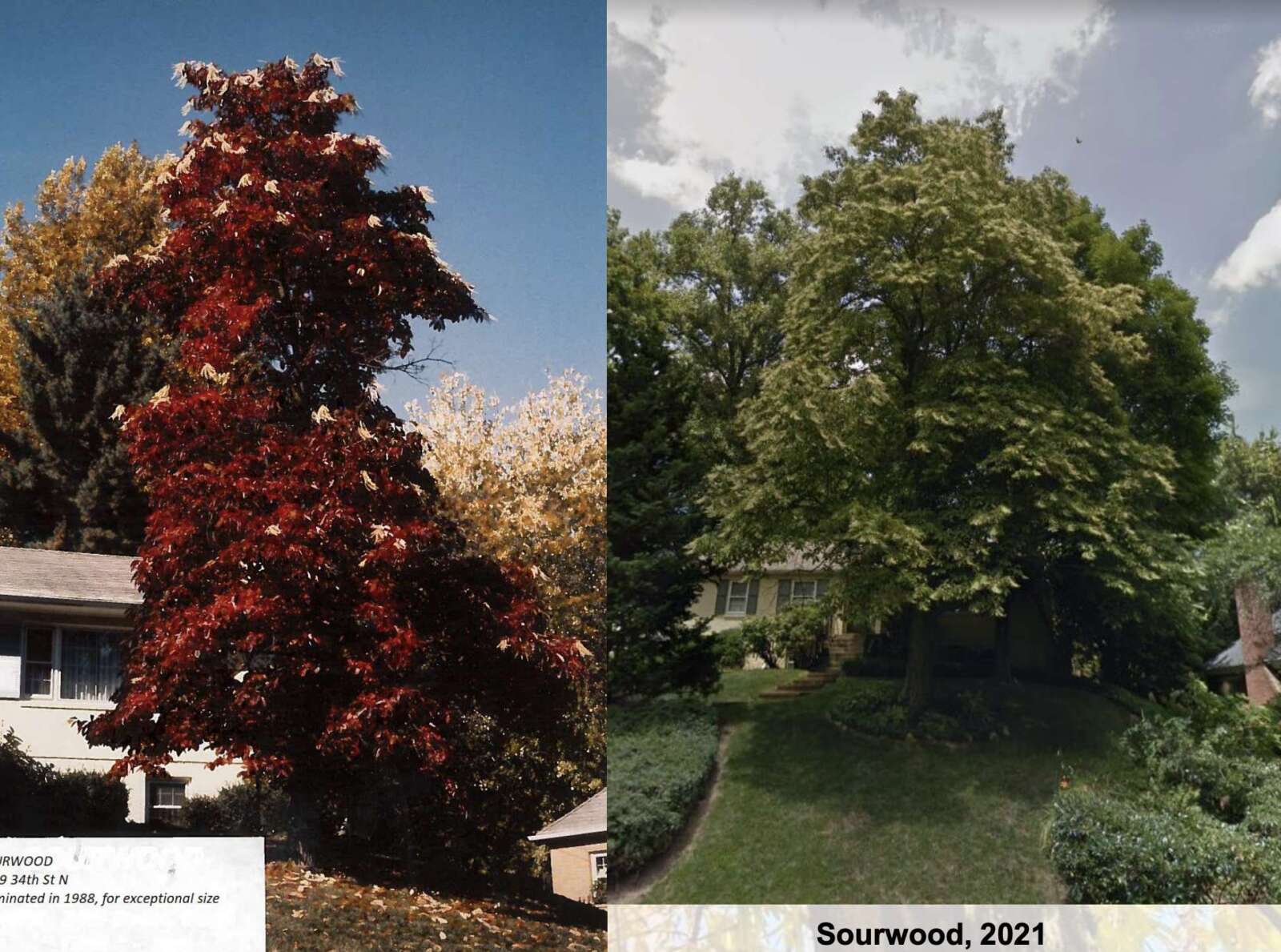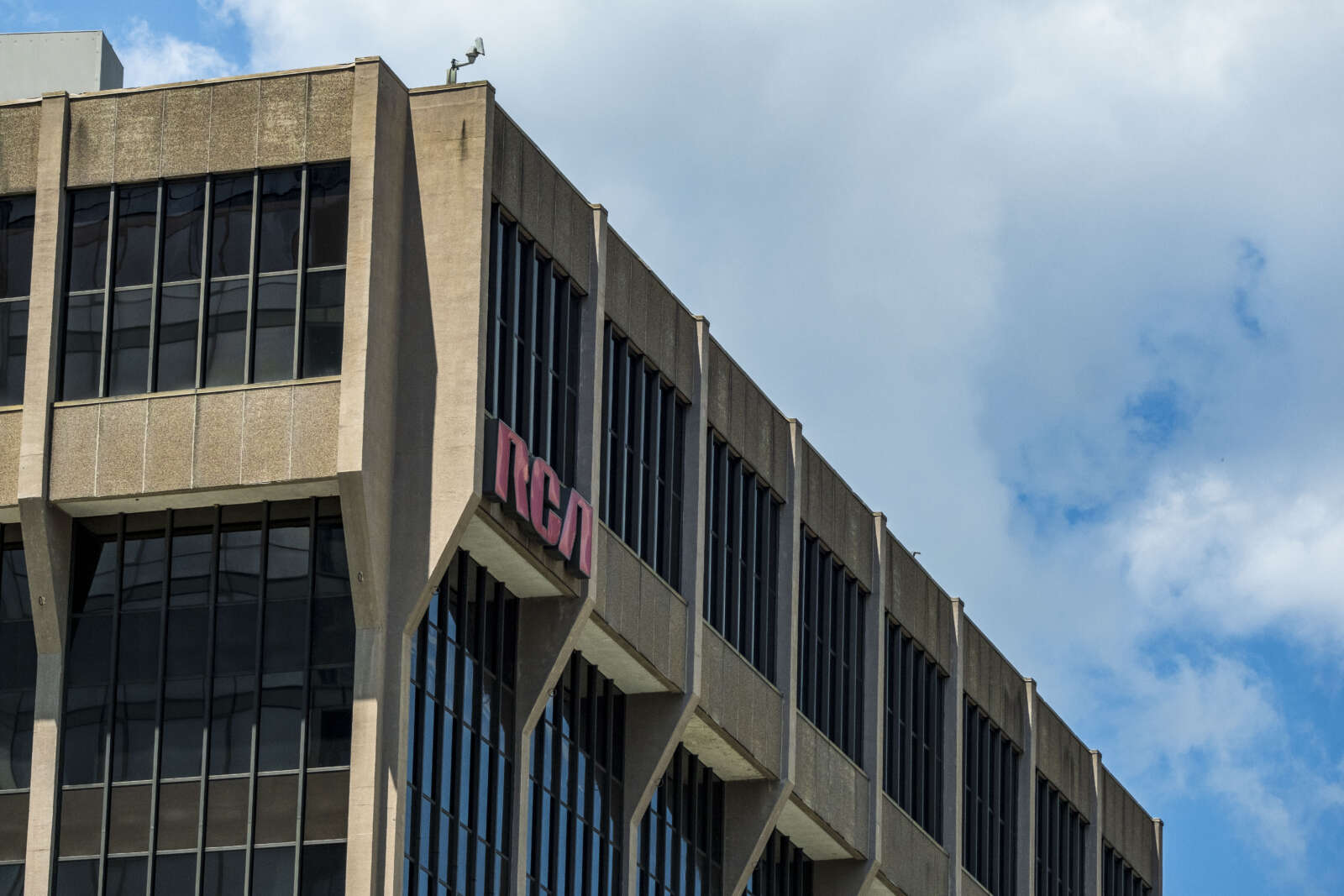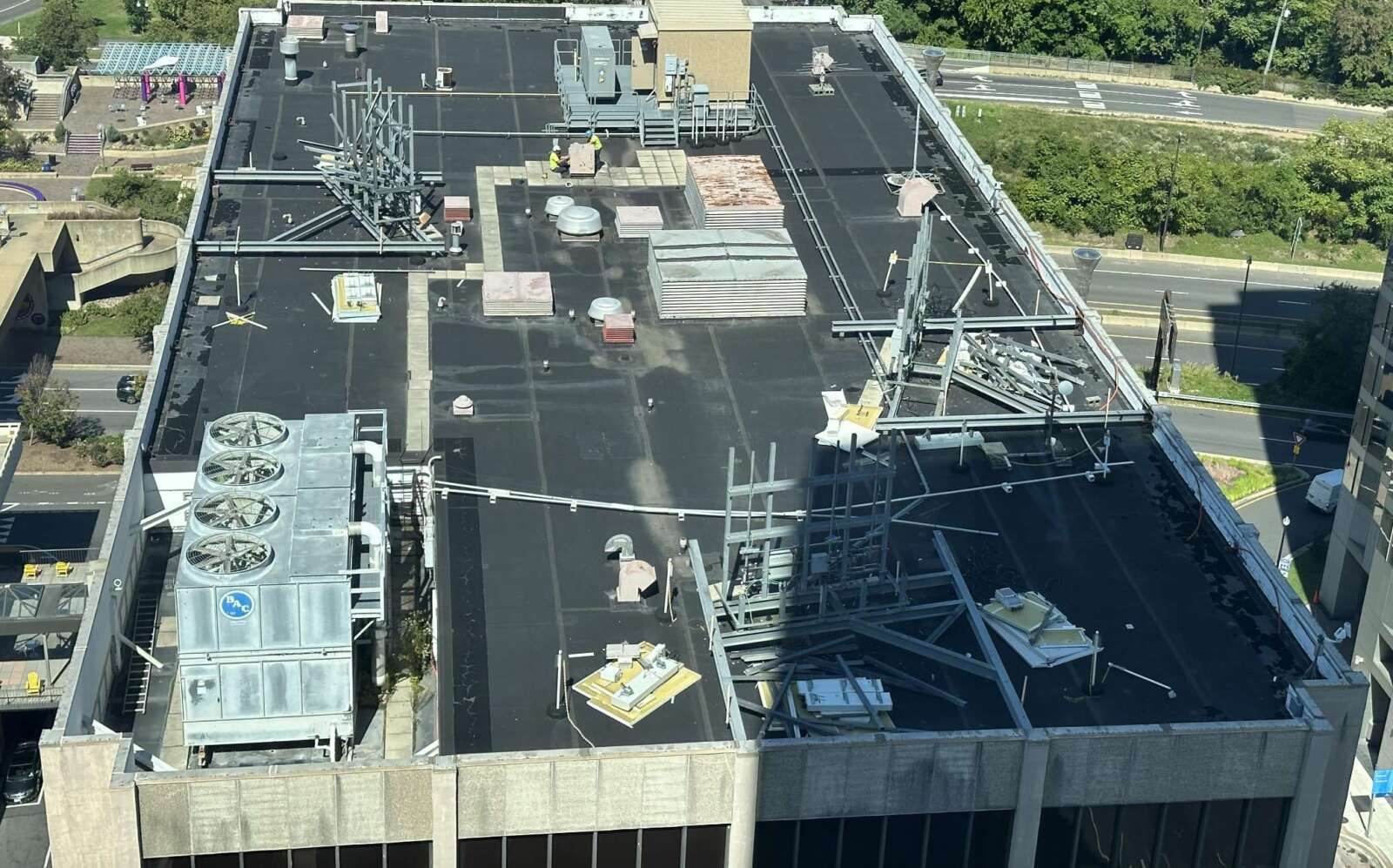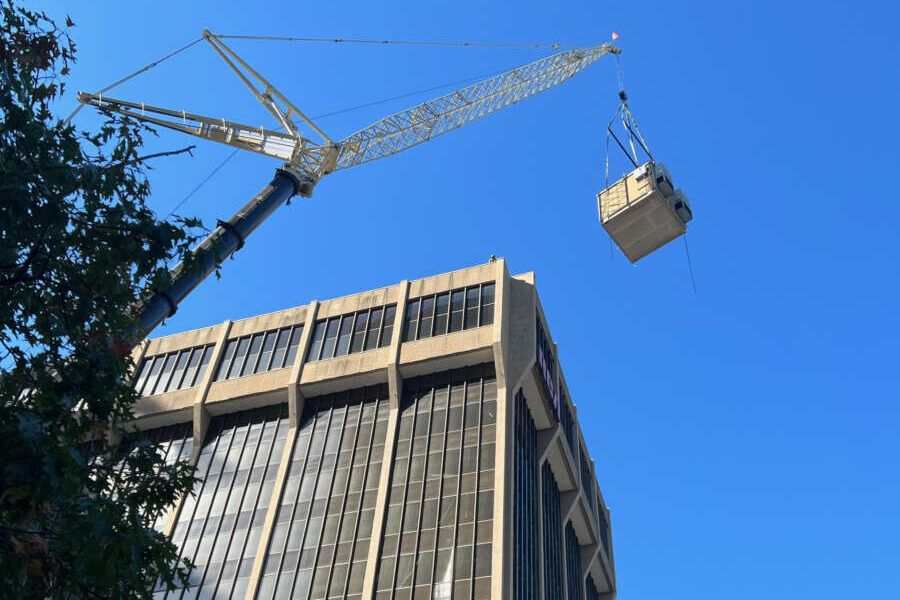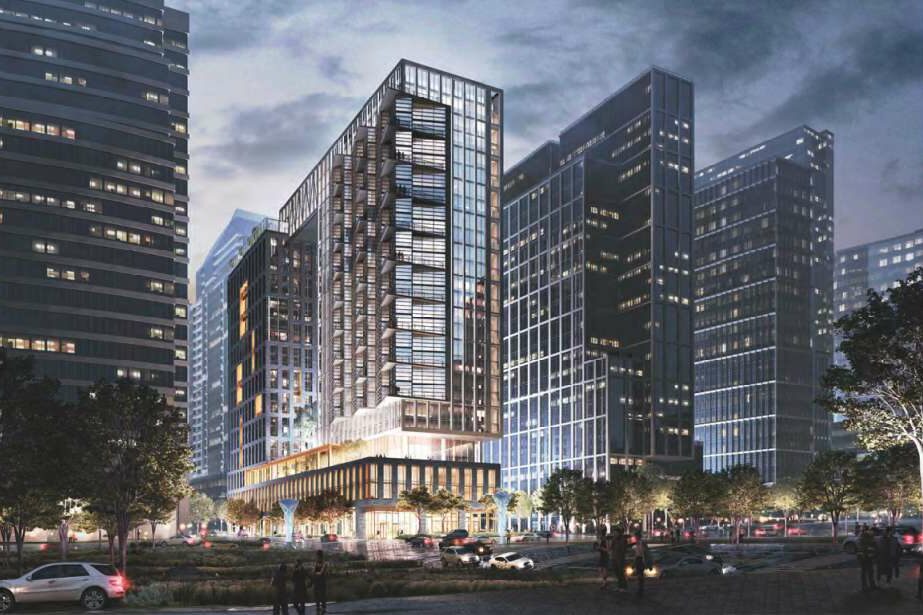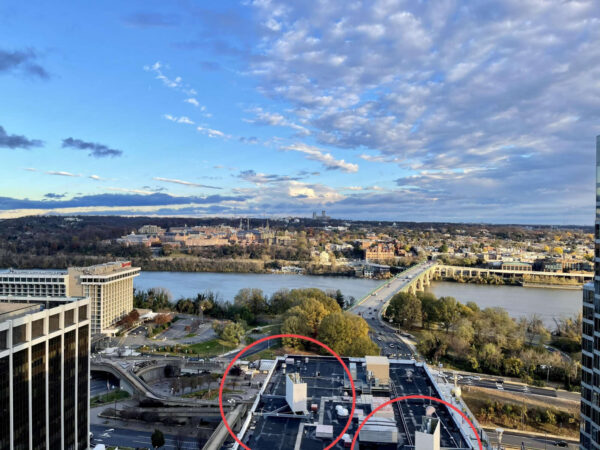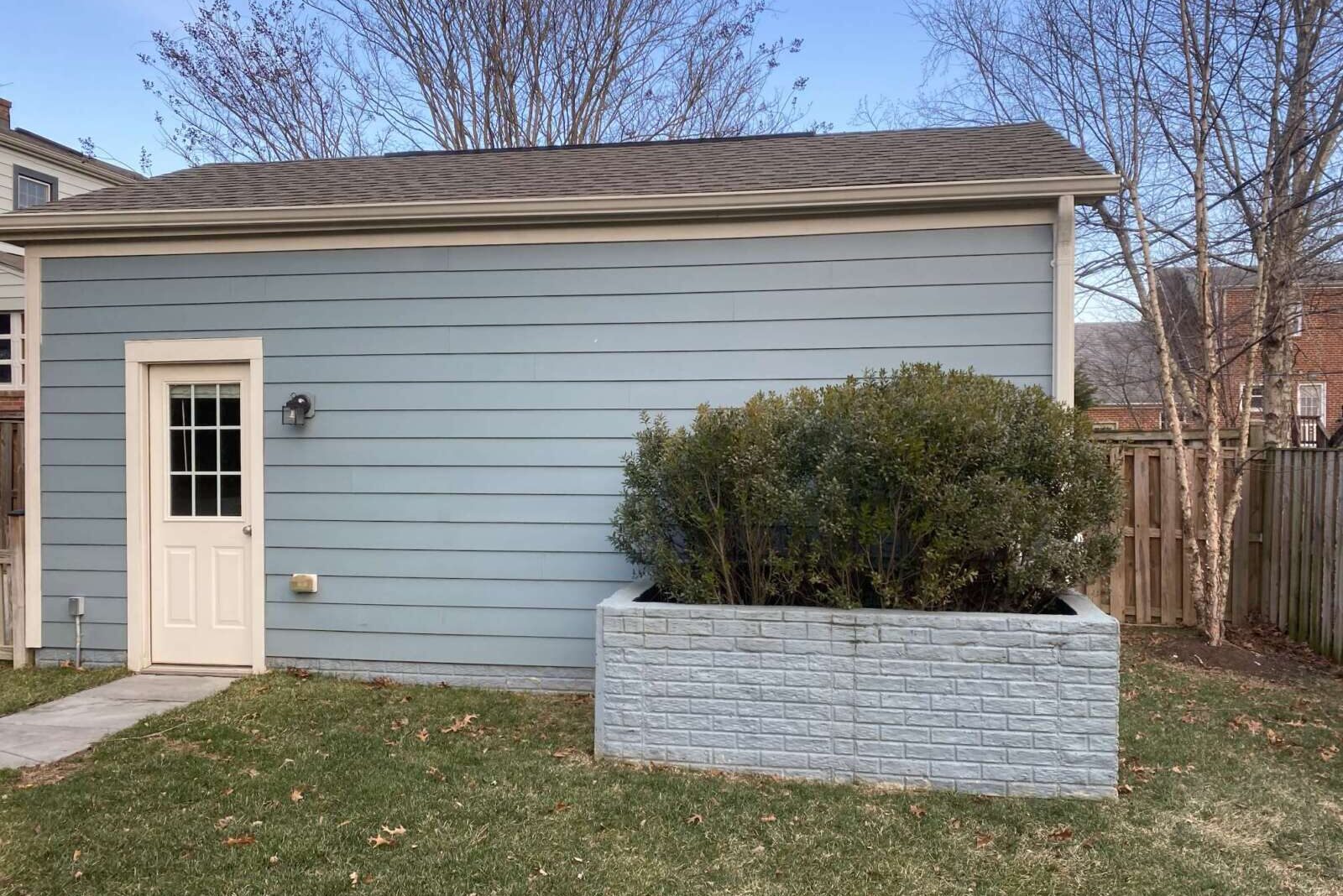
A number of police chases initiated outside the county have careened through Arlington this month.
An armed robbery last Tuesday at the Home Depot in Seven Corners resulted in a police chase up I-395 before the driver got stuck in traffic approaching the 14th Street Bridge and tried to escape on foot at the exit for the GW Parkway.
Here's another view of the @FairfaxCountyPD chase of robbery suspects into Arlington that shut I-395N yesterday. The suspects got stuck in 14th St. Bridge traffic & #police boxed them in. @ARLnowDOTcom @matthewyoung31 @RealTimeNews10 #traffic #vatraffic #dctraffic #395cam pic.twitter.com/FFGXHL76wb
— Dave Statter (@STATter911) October 19, 2022
In another chase last week, Fairfax County police initiated a chase after a cruiser was struck in Lincolnia.
Two weeks ago, the Alexandria police department followed a car into Arlington and Virginia State Police joined the pursuit — until the driver escaped across the river into D.C. and the chase was called off.
#caughtoncamera: Just before noon, an @AlexandriaVAPD officer followed a car reported to be connected to a felony into Arlington on I-395. The car ran & escaped into DC as @VSPPIO tried to stop it. @ARLnowDOTcom @HCBright10 @charlienbc @RealTimeNews10 #police #traffic #vatraffic pic.twitter.com/dZ5j71t7Ej
— Dave Statter (@STATter911) October 11, 2022
Public safety watchdog Dave Statter keeps records of most these chases from his perch in Pentagon City. While there has been a recent mini-rash of Fairfax County-initiated pursuits, he tells ARLnow this is a less common phenomenon compared to VSP chases.
“From my experience, those two recent chases by Fairfax County Police into Arlington are more of the exception that the rule,” said Statter. “In fact, they are so infrequent I had to put in a new folder in my police video file for FCPD.”
The same night as the Lincolnia chase, Statter said state police troopers were pursuing someone, too.
“Just a few minutes earlier, VSP chased and stopped someone on I-395 N near Washington Blvd,” Statter wrote. “VSP was still working that one when the FCPD chase went by. They had a little warning from the dispatcher and a couple of troopers joined in.”
(2) The @FairfaxCountyPD chase passed by the scene of a @VSPPIO chase that ended 10-minutes earlier when troopers boxed in a vehicle on I-395N at Route 27 & made an arrest. Some of those troopers joined in the second chase as Fairfax officers passed by.
— Dave Statter (@STATter911) October 18, 2022
Other VSP chases through Arlington happened on Saturday and in the early hours this morning. In the early Wednesday morning chase, VSP was following a car in connection to catalytic converter thefts in Fairfax County. On Saturday, VSP was chasing a possibly stolen car.
Recent chases involving or started by VSP that went through Arlington — including those this month — concluded with the cars escaping across the Potomac River and into D.C. Often, state police abandons pursuit once the person being chased reaches the jurisdictional line.
While you slept: Two videos showing a 12:30 a.m. chase of a car #police were looking for following catalytic converter thefts in Fairfax County. It escaped across the Potomac. @ARLnowDOTcom @HCBright10 #police #traffic #vatraffic #395cam #statcam https://t.co/EolA0LR48a pic.twitter.com/cGiypFX0Cu
— Dave Statter (@STATter911) October 26, 2022
The reason for this is that VSP has relatively loose restrictions for starting a chase, but they tighten when troopers reach state lines.
“Sworn employees may initiate a pursuit when a driver fails to stop after the sworn employee has given a lawful order to stop by activating emergency lights and/or siren,” according to Virginia State Police policy.
Anyone under pursuit for a possible misdemeanor or traffic violation is almost always in the clear if they can cross the 14th Street Bridge.
Meanwhile, Fairfax’s back-to-back chases come 13 months after the police department rolled out new, more restrictive guidance for when officers can chase suspects.
Effective September 2021, Fairfax County eliminated pursuits for misdemeanors, traffic violations and nonviolent felonies. Now, police conduct chases within Fairfax County and within Virginia for violent felonies, serious crimes with the threat or use of a firearm or explosive device, and at the authorization of a commander.
Fairfax officers join chases when they meet the department’s criteria, and officers can only pursue a car into D.C. or Maryland if the driver or passenger has attempted or is wanted for a felony crime.
Prior to the decision, Fairfax had one of the most liberal chase policies in the D.C. area, according to a police presentation from spring 2021. At the time, officials said the updated guidelines would bring the county in line with chase policies throughout the region.
“FCPD updated several pertinent policies in 2021 to further align the department with national best practices; improve officer and community safety and ensure our commitment to transparency,” according to the department’s annual crime summary for 2021. “The most significant revision included a modification to the traffic pursuit policy, which now focuses on apprehending offenders who pose the greatest risk to our community and doing so with an eye on safety.”
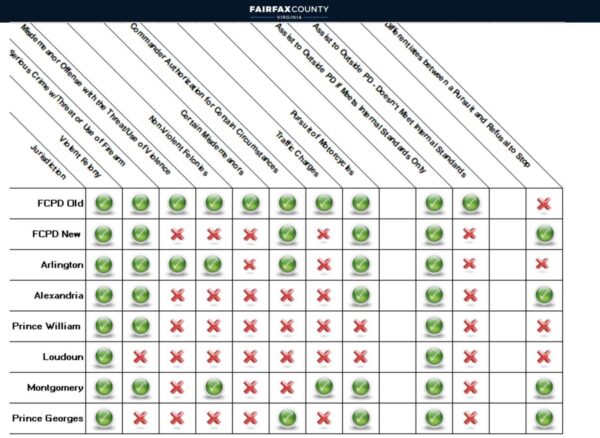
Arlington has similar police chase policies: those wanted for relatively minor crimes are usually allowed to flee an attempted traffic stop without a chase, while violent criminals may be pursued, as happened earlier this month after an armed suspect firing shots at police was chased from Arlington to Fairfax County. Arlington’s policy follows a lawsuit nearly 40 years ago by a man who lost his legs when struck in D.C. by bank robbery suspects being chased at high speed by an ACPD officer.


